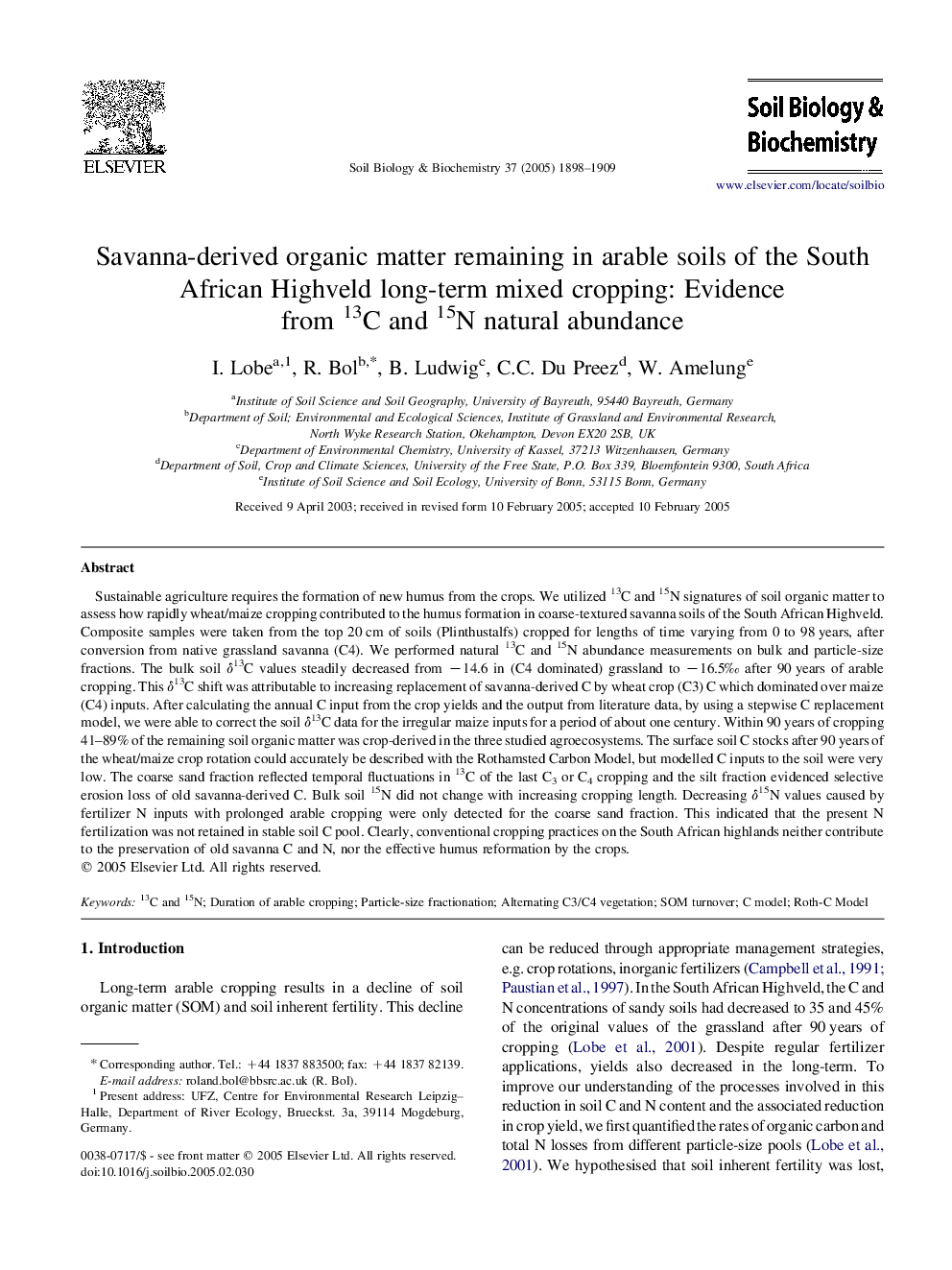| کد مقاله | کد نشریه | سال انتشار | مقاله انگلیسی | نسخه تمام متن |
|---|---|---|---|---|
| 10846267 | 1070046 | 2005 | 12 صفحه PDF | دانلود رایگان |
عنوان انگلیسی مقاله ISI
Savanna-derived organic matter remaining in arable soils of the South African Highveld long-term mixed cropping: Evidence from 13C and 15N natural abundance
دانلود مقاله + سفارش ترجمه
دانلود مقاله ISI انگلیسی
رایگان برای ایرانیان
موضوعات مرتبط
علوم زیستی و بیوفناوری
علوم کشاورزی و بیولوژیک
دانش خاک شناسی
پیش نمایش صفحه اول مقاله

چکیده انگلیسی
Sustainable agriculture requires the formation of new humus from the crops. We utilized 13C and 15N signatures of soil organic matter to assess how rapidly wheat/maize cropping contributed to the humus formation in coarse-textured savanna soils of the South African Highveld. Composite samples were taken from the top 20 cm of soils (Plinthustalfs) cropped for lengths of time varying from 0 to 98 years, after conversion from native grassland savanna (C4). We performed natural 13C and 15N abundance measurements on bulk and particle-size fractions. The bulk soil δ13C values steadily decreased from â14.6 in (C4 dominated) grassland to â16.5â° after 90 years of arable cropping. This δ13C shift was attributable to increasing replacement of savanna-derived C by wheat crop (C3) C which dominated over maize (C4) inputs. After calculating the annual C input from the crop yields and the output from literature data, by using a stepwise C replacement model, we were able to correct the soil δ13C data for the irregular maize inputs for a period of about one century. Within 90 years of cropping 41-89% of the remaining soil organic matter was crop-derived in the three studied agroecosystems. The surface soil C stocks after 90 years of the wheat/maize crop rotation could accurately be described with the Rothamsted Carbon Model, but modelled C inputs to the soil were very low. The coarse sand fraction reflected temporal fluctuations in 13C of the last C3 or C4 cropping and the silt fraction evidenced selective erosion loss of old savanna-derived C. Bulk soil 15N did not change with increasing cropping length. Decreasing δ15N values caused by fertilizer N inputs with prolonged arable cropping were only detected for the coarse sand fraction. This indicated that the present N fertilization was not retained in stable soil C pool. Clearly, conventional cropping practices on the South African highlands neither contribute to the preservation of old savanna C and N, nor the effective humus reformation by the crops.
ناشر
Database: Elsevier - ScienceDirect (ساینس دایرکت)
Journal: Soil Biology and Biochemistry - Volume 37, Issue 10, October 2005, Pages 1898-1909
Journal: Soil Biology and Biochemistry - Volume 37, Issue 10, October 2005, Pages 1898-1909
نویسندگان
I. Lobe, R. Bol, B. Ludwig, C.C. Du Preez, W. Amelung,